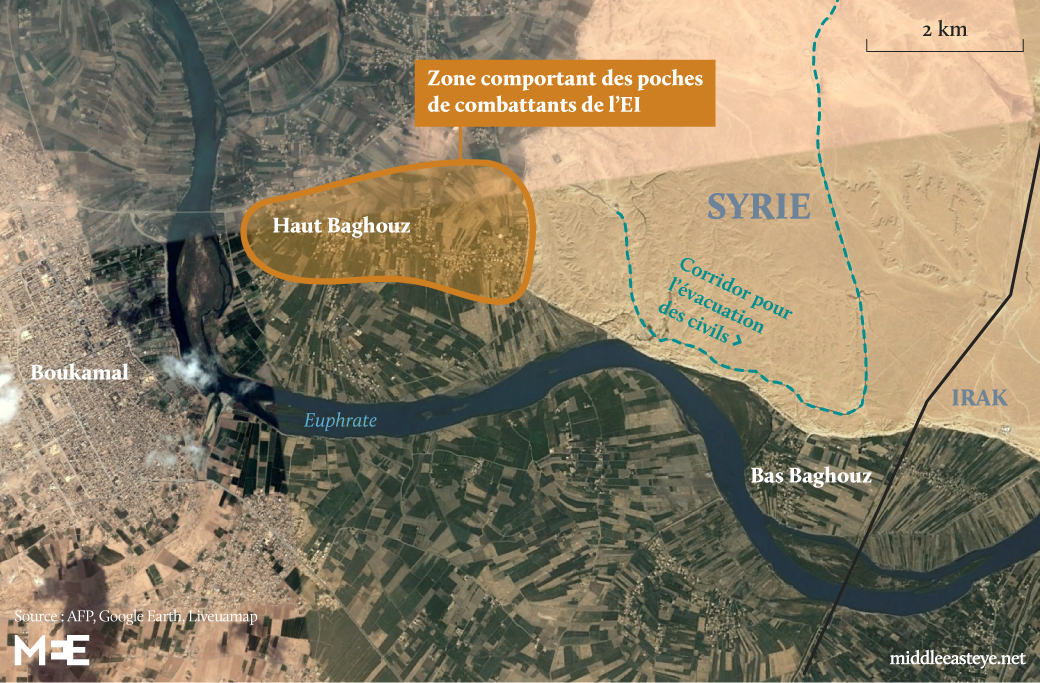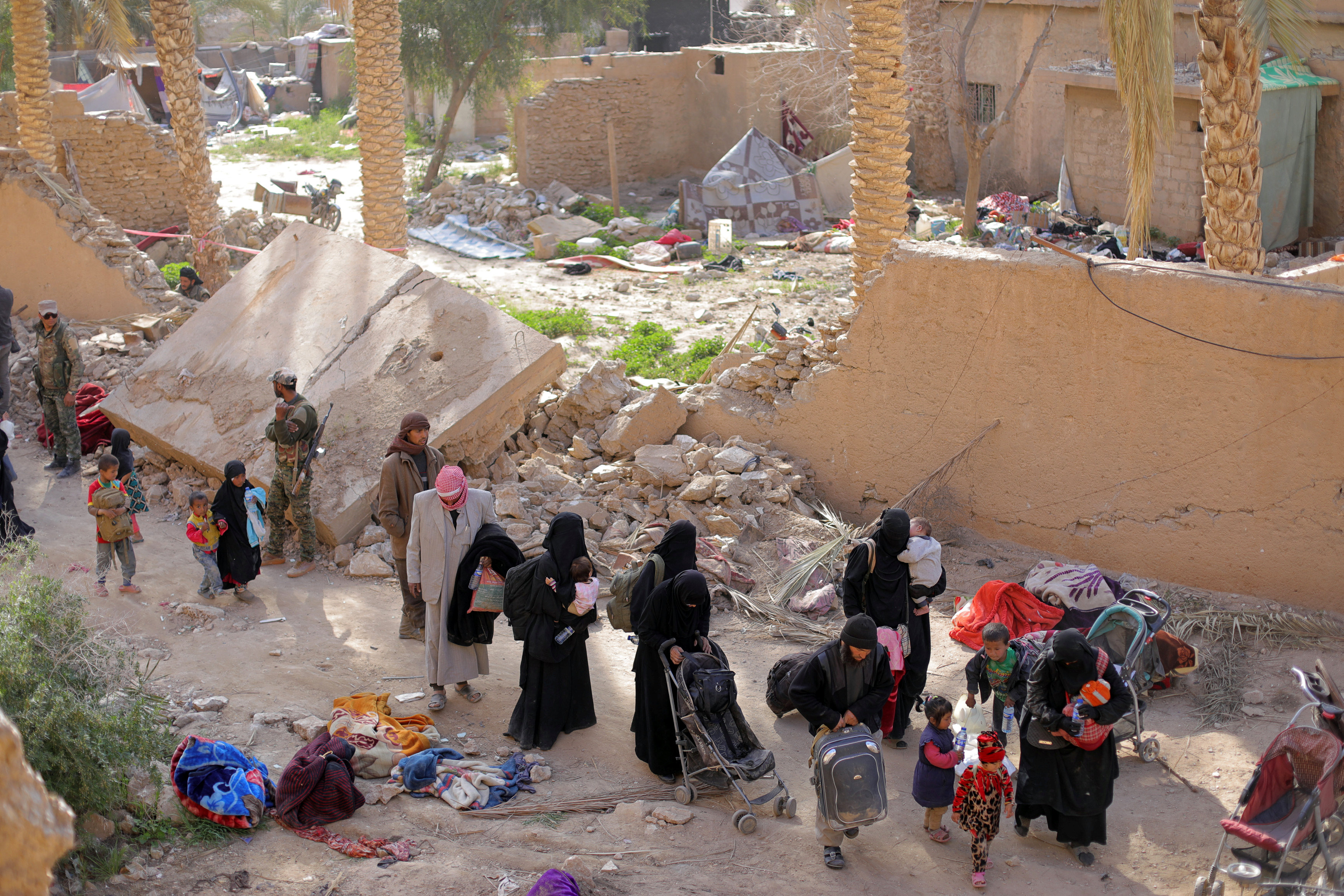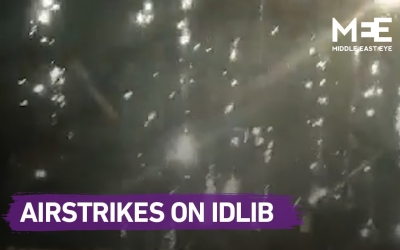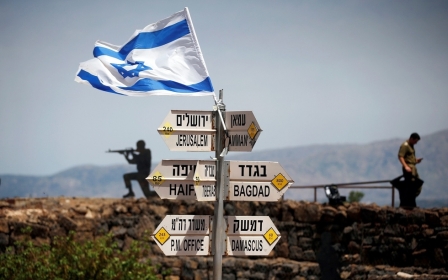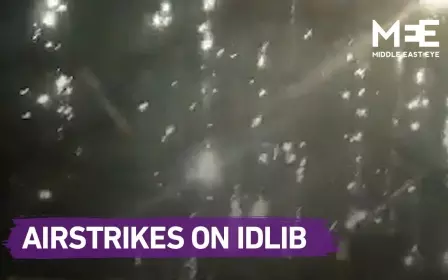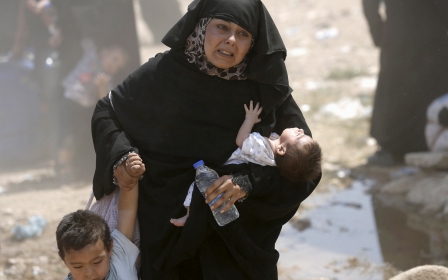US-backed forces pummel last Islamic State stronghold in Syria
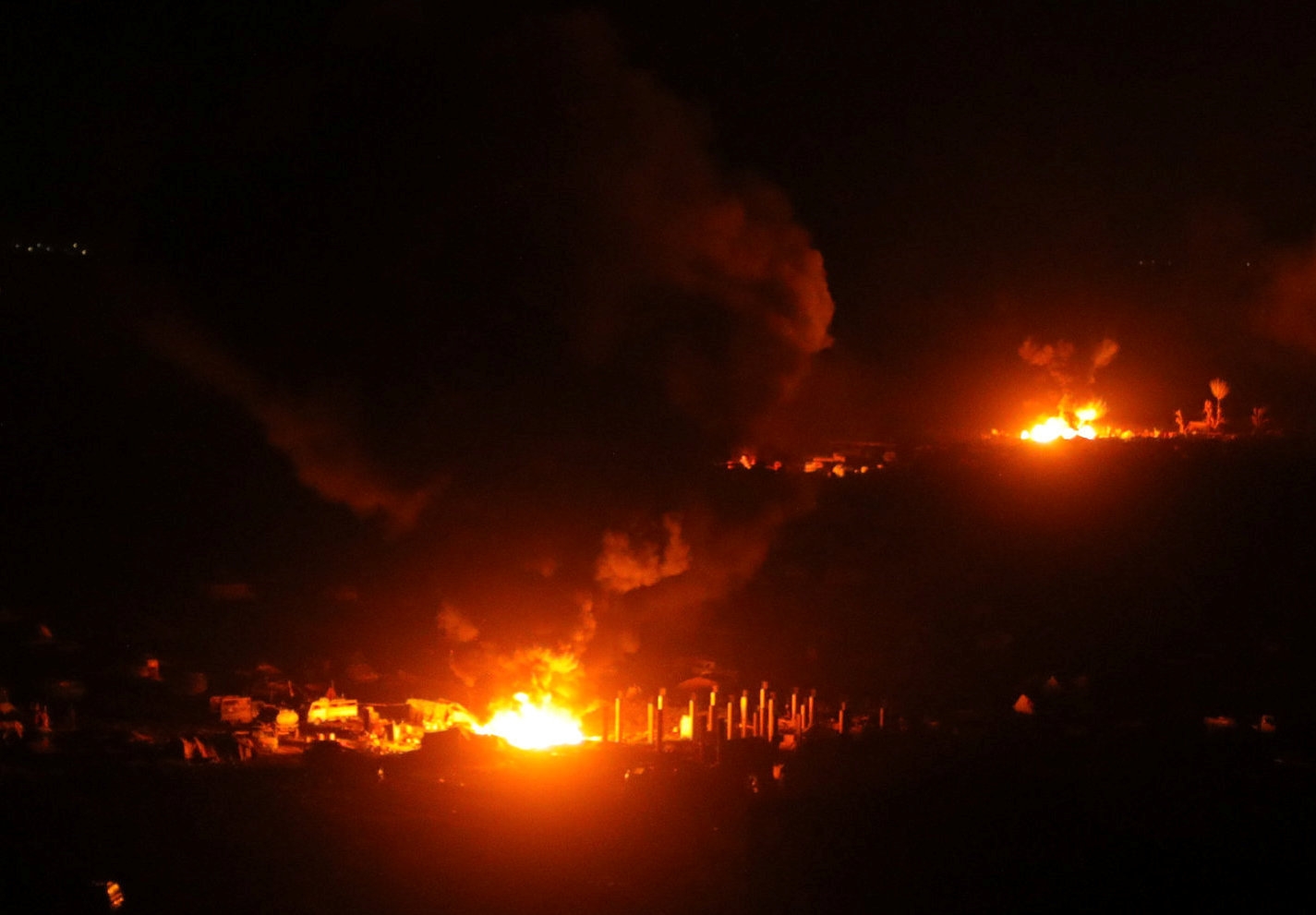
The US-backed Syrian Democratic Forces (SDF) militia has been bombarding Baghouz in an attempt to smash the last stronghold of the Islamic State (IS) group in eastern Syria.
The Arab-Kurdish fighters, backed by US warplanes, have since Sunday launched an all-out assault on the enclave, but IS militants have kept up their underground defences, unleashing suicide bombers on the advancing forces.
A spokesman for the SDF inside Baghouz, a collection of hamlets and farms, on Thursday said these tactics were preventing a speedy advance.
Those who stayed inside are mostly suicide bombers blowing themselves up, which is impeding the advance
- Jiaker Amed, SDF spokesman
"There is progress but it is slow as the area is narrow," said Jiaker Amed, a spokesman for the Kurdish People's Protection Units (YPG), who make up the largest faction of the SDF.
"Those who stayed inside are mostly suicide bombers blowing themselves up, which is impeding the advance," he told the AFP news agency.
"They are using below-ground tactics," hunkering low in tunnels and trenches, the spokesman said.
"That's why the warplanes are not having the desired effect."
Late Wednesday, AFP correspondents heard air strikes and artillery fire on the front line.
The strikes and artillery fire have been most intense at night since Sunday, sending parts of the camp up in flames.
But Amed said the battle would now continue "day and night".
Surrender
Thousands of IS fighters and their families have poured out of the militant group's shrinking pocket in Baghouz in recent weeks.
Since the offensive resumed on Sunday, 3,000 IS members have surrendered, SDF spokesman Mustefa Bali has said.
About 60,000 people have streamed out of IS-held territory since December, the Britain-based Syrian Observatory for Human Rights activist group says, around a tenth of them suspected militants.
The exodus has sparked a humanitarian crisis in Kurdish-held camps for the displaced, where women and children have arrived exhausted after weeks of siege.
These include the wives and children of alleged foreign militants, hundreds of whom are being held by the Kurdish forces.
Save the Children said on Thursday that more than 3,500 foreign children from more than 30 countries were estimated to be living in camps in northeast Syria.
Of these, over 2,000 are less than five years old, the charity said.
The International Rescue Committee says 120 people - mainly young children - have died on their way to the al-Hol camp, where most IS family members are ferried.
Call for repatriation
Syria's Kurds have repeatedly called for foreign governments to repatriate the foreign IS suspects they hold, but they have mostly been reluctant.
Baghouz is the latest major active front in Syria's devastating conflict, which enters its ninth year on Friday.
Since starting with the brutal repression of protests against President Bashar al-Assad, the war has killed around half a million people and displaced millions more.
On Thursday, a conference opened in Brussels to help donors drum up $9bn to help Syrians uprooted by the war.
The United Nations estimates that $5.5bn is needed to help the approximately 5.6 million Syrians who were forced to flee their country to Turkey, Lebanon, Jordan, Iraq and Egypt.
However, European countries have warned that the money must not prop up Assad.
As the conflict reaches its eighth anniversary, the president may have ensured his political survival, but his country is fragmented and cash-strapped.
Assad's forces control almost two-thirds of the country, after victories against the rebels and militants since Russian military intervention in 2015.
But the northwestern bastion of Idlib, held by Syria's former al-Qaeda affiliate, as well as a large area of the oil-rich northeast controlled by the SDF, remain beyond his reach.
Russian air strikes killed 13 civilians in Idlib on Wednesday, according to the Observatory, which relies on a network of sources inside Syria for its information.
It said they were the first such raids on the region since a September buffer zone deal intended to protect it from a massive government assault.
Middle East Eye propose une couverture et une analyse indépendantes et incomparables du Moyen-Orient, de l’Afrique du Nord et d’autres régions du monde. Pour en savoir plus sur la reprise de ce contenu et les frais qui s’appliquent, veuillez remplir ce formulaire [en anglais]. Pour en savoir plus sur MEE, cliquez ici [en anglais].


